ADATA SP920 (128GB, 256GB, 512GB & 1TB) Review
by Kristian Vättö on April 1, 2014 8:30 PM ESTRandom Read/Write Speed
The four corners of SSD performance are as follows: random read, random write, sequential read and sequential write speed. Random accesses are generally small in size, while sequential accesses tend to be larger and thus we have the four Iometer tests we use in all of our reviews.
Our first test writes 4KB in a completely random pattern over an 8GB space of the drive to simulate the sort of random access that you'd see on an OS drive (even this is more stressful than a normal desktop user would see). We perform three concurrent IOs and run the test for 3 minutes. The results reported are in average MB/s over the entire time.
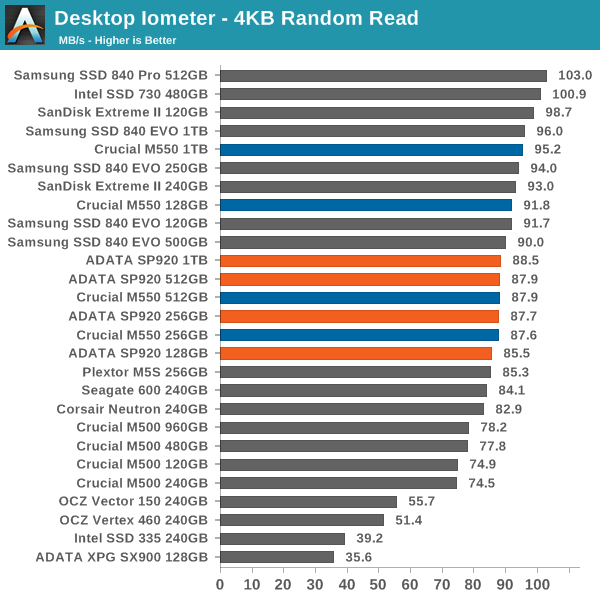
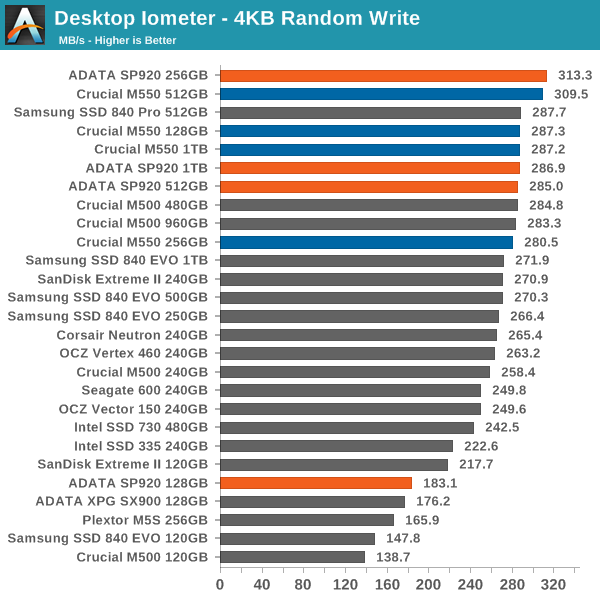
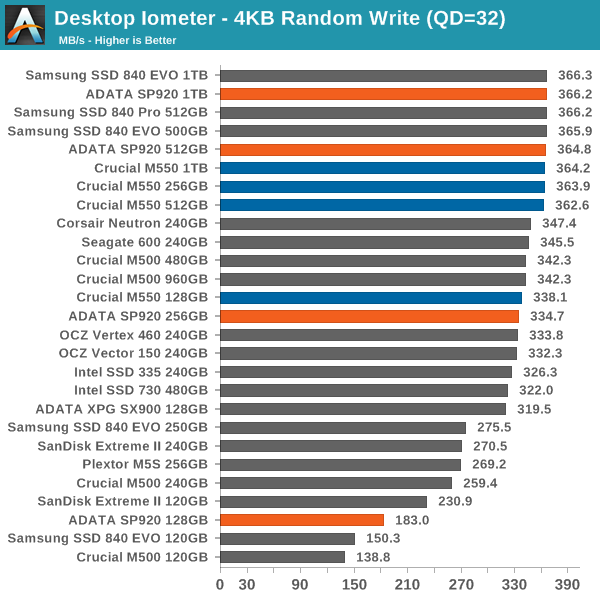
Here you can clearly see the disadvantage of 128Gbit NAND. While the 128GB M550 is nearly able to match the bigger capacities, the 128GB SP920 is noticeably slower. It still offers better performance than a few competing 120/128GB class SSDs, but there are plenty of faster options.
Sequential Read/Write Speed
To measure sequential performance we run a 1 minute long 128KB sequential test over the entire span of the drive at a queue depth of 1. The results reported are in average MB/s over the entire test length. Read speeds tend not to drop as much with fewer NAND die, so the SP920 128GB looks similar to the other SP920 capacities here.
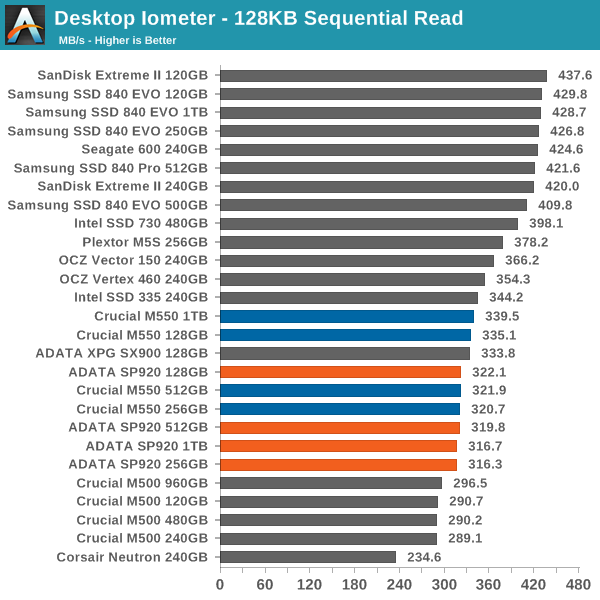
The same isn't true of sequential write performance—at 256GB there is only a minor decrease over bigger capacities but the 128GB offers about half the throughput of the other SSDs.
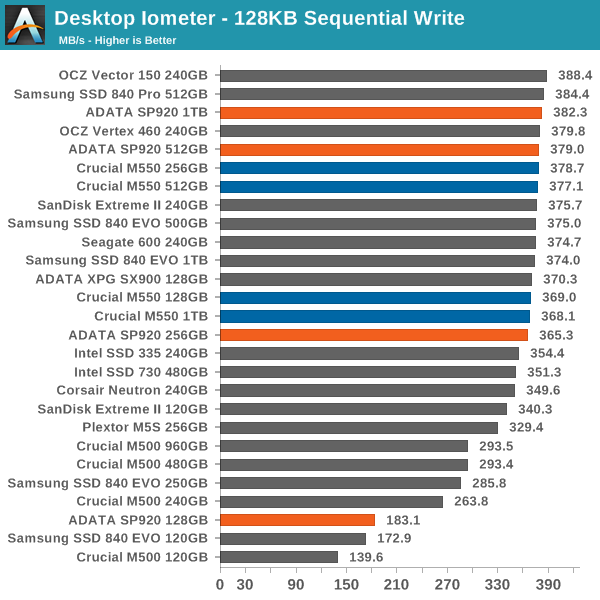
AS-SSD Incompressible Sequential Read/Write Performance
The AS-SSD sequential benchmark uses incompressible data for all of its transfers. The result is a pretty big reduction in sequential write speed on SandForce based controllers. Here, the M550 ends up quite a bit faster than the SP920 at the lower capacities in the write test, though both are still faster than the M500.
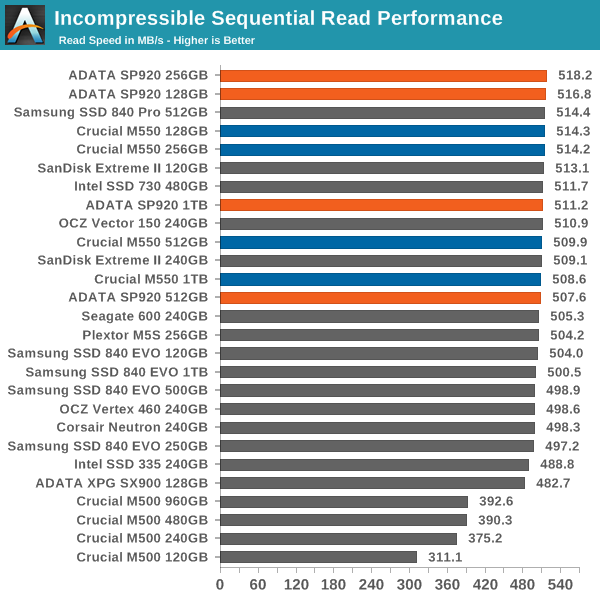
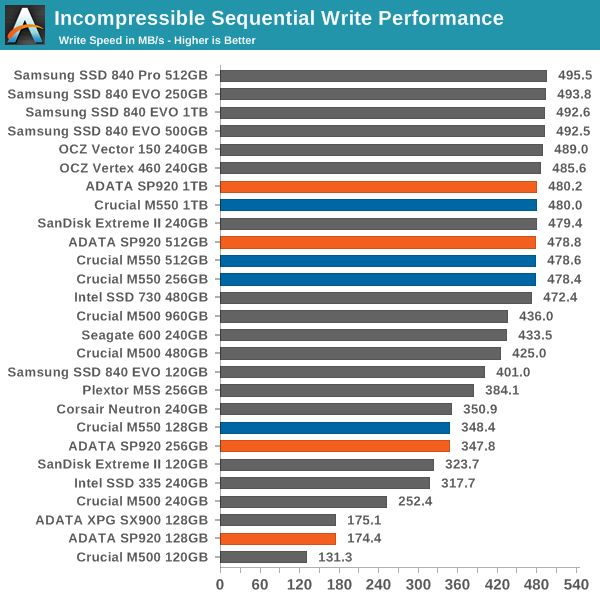










30 Comments
View All Comments
Samus - Wednesday, April 2, 2014 - link
Marvell controllers are just simpler than Sandforce (which is a good thing)Marvell has eDrive support in their newer controllers, simpler firmware, lower power usage, and no compression technology (making the implementation simple and performance consistent)
I prefer Marvell and Intel controllers over everyone else's but some newer controllers have looked promising (like OCZ's Barefoot)
Kristian Vättö - Thursday, April 3, 2014 - link
Marvell only provides the silicon - the firmware development is up to the manufacturer.hojnikb - Wednesday, April 2, 2014 - link
It's interesting to see that lower capacity versions perform better than m500, despite using the same die size flash. Is this because of the updated controller or more aggressive flash programming ?Samus - Wednesday, April 2, 2014 - link
They have the m550 controller but use the m500's NAND technology so the lower capacity drives are in between the m500 and m550 in performance.Kristian Vättö - Thursday, April 3, 2014 - link
Likely just better optimization at the firmware level.hojnikb - Thursday, April 3, 2014 - link
So in theory, they could update the m500 and boost it's, if they wanted ?hojnikb - Thursday, April 3, 2014 - link
*write speed, silly me :)(damn no edit option)
nick2crete - Wednesday, April 2, 2014 - link
Well ,i prefer to deal with Crucial than Adata even overseas where i am ..Hubb1e - Wednesday, April 2, 2014 - link
I just wanted to let the writer and editorial staff know that a good number of people skip right to the end of the article for the normal recap of the article's main points. This is especially true for SSD articles which IMO are getting to be a commodity and aren't all that interesting anymore. I felt that the final words didn't do a good job of recapping where this drive stands in the overall SSD segment, didn't give much in the way of a pro/cons for this drive, and refereed too much to a comparison with a drive that I don't know much about. This seems like a new writer so I wanted to let the staff know about my opinion on this so he can improve his next article for Anandtech.mcnaughty - Wednesday, April 2, 2014 - link
Totally agreed. Skip the waffle, we regular readers know all this already. Give us the numbers, and the interesting differences.